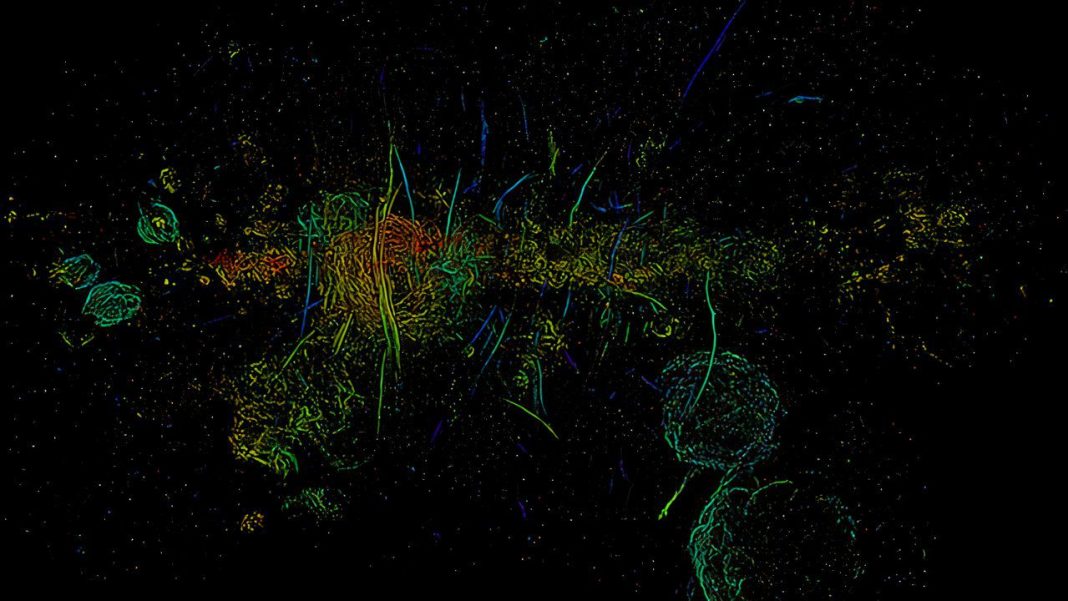About 1,000 magnetic filaments have been revealed in a new image of the center of the Milky Way, using radio waves detected by the South African Radio Astronomy Observatory’s (SARAO) MeerKAT telescope. Scientists have been trying to unravel them since the 1980s, but only now has the full picture been observed.
The filaments were discovered by Farhad Yusef-Zadeh of Northwestern University. At the time, the researcher had already noticed how they were organized, in addition to having discovered cosmic ray electrons rotating around the magnetic field at close to the speed of light.
However, the picture at that time was limited by the technology of astronomical instruments. Now, with modern, highly sensitive telescopes, Yusef-Zadeh and his team have achieved an image that reveals 10 times more filaments than previously discovered. This allowed a glimpse of the whole scenario.
Want to stay on top of the best tech news of the day? Access and subscribe to our new youtube channel, Kenyannews News. Every day a summary of the main news from the tech world for you!
Up to 150 light-years long, the filaments are arranged in pairs and clusters, often side by side like strings on a harp. Those that make up the clusters are separated from each other by perfectly equal distances — which, interestingly, corresponds to the distance between the Earth and the Sun.
In addition to the filaments, the new image captures radio emissions from phenomena such as erupting stars, stellar nurseries and supernova remnants. To isolate the filaments and look at them in greater detail, the team used a technique to remove the background from the main image.
What are these filaments in the Milky Way?
Exactly what created the magnetic filaments is not yet known, but some possibilities have already been ruled out. For example, they are unlikely to have been the result of supernova remnants, as the variation in radiation emitted by both is distinct.
It could be that the threads are related to the previous activities of the Milky Way’s central supermassive black hole, according to the authors of the new study. They could also be related to massive radio broadcast bubbles discovered by Yusef-Zadeh and colleagues in 2019.
Other features are intriguing, such as the way the filaments are structured. “We still don’t know why they come in groups nor do we understand how they separate, and we don’t know how these regular spacings happen,” Yusef-Zadeh said. “Every time we answer one question, several more come up.”
It also remains to be discovered whether the filaments move or change over time, or what accelerates electrons to near the speed of light. To unravel these mysteries, Yusef-Zadeh and his team work to identify and catalog each filament, determining their angle, curve, magnetic field, spectrum and intensity. This should help to discover the nature of these structures.
The study has been accepted for publication in The Astrophysical Journal Letters and the full image will be published in an additional paper in an upcoming issue of the journal.
